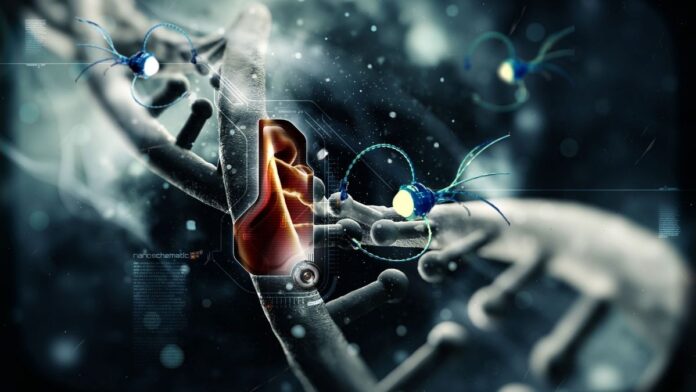
The microscopic world is alien and fascinating, but if we search more than the tiny scale, there is a deep and relatively unrevealed world beyond what the human eye can see. Beyond the microscopic scale, we will explore the potentials of work at a nanoscopic level, a level a billion times smaller than the average scale we work today; this level is the Manipulation of Atoms and Molecules, Which means science and technology at the nanoscale, i.e., real-world applications of nanotechnology.
Nanotechnology is the science of building small, really, really small; it’s pretty challenging to imagine how small it is. It has significant benefits as well as potential risks. Nanotechnology may create many new materials and devices with a vast range of applications; on the other hand; it raises many of the same issues as any new technology; how? Let’s know in deep.
Contents
Introduction to Nanotechnology
First of all, what is this Nanotechnology? The earliest, widespread description of nanotechnology referred to the particular technological goal of precisely Manipulating atoms and molecules for the fabrication of macroscale products, also known as molecular nanotechnology. Nanotechnology or “nanotech” is the use of matter on an atomic, molecular, and supramolecular scale for industrial purposes. Hence, technology and engineering are being secondary acted at the nanoscale, which is about 1 to 100 nanometers. Nanoscience and nanotechnology are the study and application of tiny things and can be used across all the other science fields, such as chemistry, biology, physics, materials science, and engineering.
A more generalized description of nanotechnology was subsequently established by the National Nanotechnology Initiative, which defined nanotechnology as manipulating matter with at least one dimension sized from 1 to 100 nanometers. This definition reflects that quantum mechanical effects are significant at this quantum-realm scale. So the meaning shifted from a particular technological goal to a research category inclusive of all types of research and technologies that deal with the unique properties of matter that occur below the given size threshold. It is, therefore, common to see the plural form “nanotechnologies” and “nanoscale technologies” to refer to the broad range of research and applications whose common trait is size.
Read more about Nanotechnology:
How did Nanotechnology start?
The ideas and concepts behind Nanoscience and nanotechnology were coined in a talk entitled “There’s Plenty of Room at the Bottom” by physicist Richard Feynman at an American Physics Society meeting at the California Institute of Technology (CalTech) on December 29, 1959. In his talk, Feynman described a process in which scientists could manipulate and control individual atoms and molecules. Over a decade later, Professor Norio Taniguchi coined the term “Nanotechnology” in his explorations of ultraprecision machining.
Modern Nanotechnology began in 1981 with the invention and development of the Scanning Tunneling Microscope that could see individual atoms. Then in 1986, K. Eric Drexler used the term “nanotechnology” in his book Engines of Creation: The Coming Era of Nanotechnology, which proposed the idea of a nanoscale “assembler” that would be able to build a copy of itself and other items of arbitrary complexity with atomic control.
In 1986, Drexler co-founded The Foresight Institute to help increase public awareness and understanding of nanotechnology concepts and their implications. He also emerged nanotechnology as a field through his theoretical, high-visibility experimental advances and general work, which developed and popularized a conceptual framework for nanotechnology and drew additional wide-scale attention to the prospects of atomic control of matter.
Fundamental Concepts in Nanotechnology and Nanoscience
One nanometer is a billionth meter or 10-9 of a meter, so it’s hard to imagine just how small nanotechnology is. However, here are a few illustrative examples that may help you understand how small nanotechnology is:
- There are 25,400,000 nanometers in an inch.
- A sheet of newspaper is about 100,000 nanometers thick.
- On a comparative scale, if a marble were a nanometer, then one meter would be the size of the Earth.
Nanotechnology and Nanoscience involve seeing and controlling individual atoms and molecules. Everything on Earth comprises bits—the food we eat, the clothes we wear, the buildings and houses we live in, and our bodies. But something as small as an atom is impossible to see with the naked eye.
It’s impossible to see atoms with the microscopes typically used in high school science classes. This is because the microscopes needed to see things at the nanoscale were invented about 30 years ago. Once scientists had the right tools, such as the scanning tunneling microscope (STM) and the atomic force microscope (AFM), the age of nanotechnology was born.
Although modern Nanoscience and nanotechnology are relatively new, nanoscale materials have been used for centuries. Alternate-sized gold and silver particles created colors in the stained glass windows of medieval churches hundreds of years ago. The artists back then didn’t know that the process they used to create these beautiful works of art led to changes in the composition of the materials they were working with. Likewise, today’s scientists and engineers are finding various ways to deliberately make materials at the nanoscale to take advantage of their enhanced properties, such as higher strength, lighter weight, increased control of the light spectrum, and greater chemical reactivity than their larger-scale counterparts.
Growth of Nanotechnology in the Modern Era
Two inventions sparked the growth of nanotechnology in the modern era. First, the Scanning Tunneling Microscope was invented by Gerd Binnig and Heinrich Rohrer at IBM Zurich Research Laboratory, which provided a unique visualization of individual atoms and bonds and was also successfully used to manipulate individual atoms. In 1986 the developers of the microscope received a Nobel Prize in Physics. Later they also invented the Analogous Atomic Force Microscope.
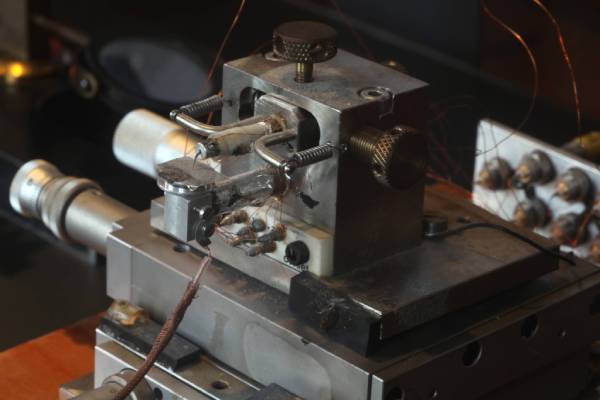
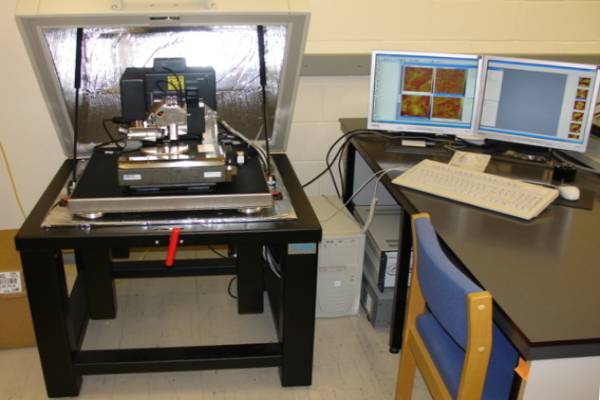
Second, the discovery of “Fullerenes” (C60) by Harry Kroto, Richard Smalley, and Robert Curl, who together won the 1996 Nobel Prize in Chemistry. C60 was not initially described as nanotechnology; the term was used regarding subsequent work with related graphene tubes (called carbon nanotubes and sometimes called Bucky tubes), which suggested potential applications for nanoscale electronics and devices. The discovery of carbon nanotubes is primarily attributed to Sumio Iijima of NEC corporation in 1991, for which Iijima won the inaugural 2008 Kavli Prize in Nanoscience.
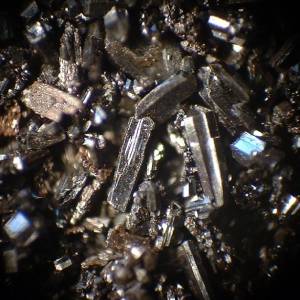
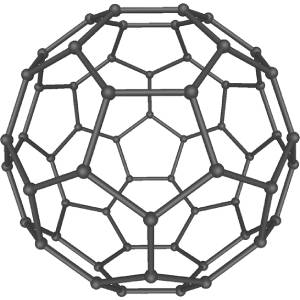
In early 2000, the nanotechnology field increased scientific, political, and commercial attention, leading to controversy and progress. The Royal Society’s report on nanotechnology said Controversies appeared regarding the definitions and potential implications of nanotechnologies. Challenges were raised concerning the probability of applications imagined by advocates of molecular nanotechnology, which ended in a public debate between Drexler and Smalley in 2001 and 2003.
On the other hand, the commercialization of products based on advancements in nanoscale technologies began developing. These products are limited to bulk applications of nanomaterials and do not involve atomic control of matter. Some examples include the Silver Nano platform for uses silver nanoparticles as an antibacterial agent, nanoparticle-based transparent sunscreens, carbon fiber strengthening using silica nanoparticles, and carbon nanotubes for stain-resistant textiles.
Government bodies also moved to promote and fund research and development of nanotechnology, such as in the U.S. with the National NanotechnU.S.y Initiative, which formalized a size-based definition of nanotechnology and established funding for research on the nanoscale, and in Europe via the European Framework Programmes for Research and Technological Development.
By the mid-2000s, new and severe scientific attention began to flourish. Projects emerged to produce nanotechnology roadmaps that center on atomically precise manipulation of matter and discuss existing and projected capabilities, goals, and applications.
In 2006, Korean researchers from the Korea Advanced Institute of Science and Technology (KAIST) and the National Nano Fab Center developed a 3nm MOSFET, the world’s smallest nanoelectronic device. It was based on gate-all-around (GAA) FinFET technology.
Over sixty countries created government programs for nanotechnology research and development (R&D) between 2001 and 2004. Government funding was exceeded by corporate spending on nanotechnology R&D, with most funding coming from corporations based in the United States, Japan, and Germany. The top five organizations that filed the most intellectual patents on nanotechnology R&D between 1970 and 2011 were Samsung Electronics (2,578 first patents), Nippon Steel (1,490 first patents), IBM (1,360 first patents), Toshiba (1,298 first patents), and Canon (1,162 first patents). The top five organizations that published the most scientific papers on nanotechnology research between 1970 and 2012 were the Chinese Academy of Sciences, the Russian Academy of Sciences, Centre National de la Recherche Scientifique, the University of Tokyo, and Osaka University.
Applications of Nanotechnology
Applications of nanotechnology mean the commercialization of nanotech products, although most applications are limited to the bulk use of passive nanomaterials. Over the next several decades, nanotechnology applications will likely include much higher-capacity computers, active materials of various kinds, and cellular-scale biomedical devices. Some Applications of nanotechnology are explained below.
1. Nanotechnology in Energy
Nanotechnology in Energy is the development of more efficient and sustainable technologies for generating and storing Energy. Dr. Wade Adams from Rice University says, “Energy will be the most pressing problem facing humanity in the next 50 years, and nanotechnology has the potential to solve this issue”. People in the fields of science and engineering have already begun developing ways of utilizing nanotechnology to build consumer products. Benefits already observed from these products’ design are increased lighting and heating efficiency, increased electrical storage capacity, and decreased pollution from using Energy.
Nanofabrication, the process of designing and creating devices on the nanoscale, is an essential sub-field of energy-related nanotechnology. It is the ability to create devices smaller than 100 nanometers. This technology opens many doors for developing new ways to capture, store, and transfer Energy. Some other examples are lithium-sulfur-based high-performance batteries, Silicon-based Nano Semiconductors, Nanomaterials in Solar Cells, and Nanoparticle Fuel Additives.
Nanomaterials in Energy can increase the energy efficiency of fuel in several ways, but there’s a drawback to their use, i.e., the effect of nanoparticles on the environment. Cerium oxide nanoparticle additives in fuel can increase toxic particles in the background. So more research is needed to determine whether adding artificial nanoparticles In powers decreases the net amount of harmful particle emissions due to combustion.
2. Carbon nanotubes
Carbon nanotubes (CNTs) are cylinders of one or more graphene layers (lattice). Diameters of single-walled carbon nanotubes (SWNTs) and multi-walled carbon nanotubes (MWNTs) are typically 0.8 to 2nm and 5 to 20nm, respectively, although MWNT diameters can exceed 100 nm. CNT lengths range from less than 100nm to 0.5m.
Carbon Nanotube is used for energy storage, device modeling, automotive parts, boat hulls, sporting goods, water filters, thin-film electronics, coatings, actuators, and electromagnetic shields.
3. Nanobiotechnology
Nanobiotechnology, bionanotechnology, and nanobiology are parts of nanotechnology and biology. Bionanotechnology and nanobiotechnology have recently emerged as a subject that serves as blanket terms for various related technologies. This technical approach to biology allows scientists to imagine and create systems that can be used for biological research. Biologically inspired nanotechnology uses natural methods to inspire technologies not yet developed. However, as with nanotechnology and biotechnology, bionanotechnology has many potential ethical issues.
4. Nanomedicine
Nanomedicine ranges from the medical applications of nanomaterials and biological devices to nanoelectronic biosensors and even possible future applications of molecular nanotechnology such as physical machines; thus, Nanomedicine is the medical application of nanotechnology. However, Understanding the issues related to toxicity and environmental impact of nanoscale materials is a significant problem for Nanomedicine.
5. Nanotechnology to enhance environmental sustainability
Nanotechnology can help enhance ecological sustainability by using nanotechnology products to improve sustainability. It includes making green nano-products and using nano-products in support of sustainability. Green nanotechnology has been described as the development of clean technologies, which means minimizing potential environmental and human health risks associated with the manufacture and use of nanotechnology products and encouraging the replacement of existing products with new nano-products that are more environmentally friendly throughout their lifecycle.
6. Nanotechnology in Industries
Nanotechnology is predicted to be the primary driver of technology and business in this century. It holds the promise of higher-performance materials, intelligent systems, and new production methods with a significant impact on all aspects of society. Nanotechnology is impacting the field of consumer goods, there are a variety of items and products that include nanomaterials, and people who use these products do not even know that they contain nanoparticles. Some examples are – products with novel functions ranging from easy-to-clean to scratch-resistant.
Some examples are; It made car bumpers lighter, clothing more stain repellant, sunscreen more radiation-resistant, synthetic bones stronger, cell phone screens lighter weight, glass packaging for drinks leads to a longer shelf-life, and balls for various sports are made more durable. Moreover, using nanotech, in the mid-term modern textiles will become “smart” through embedded “wearable electronics” Such novel products also have promising potential, especially in the field of cosmetics, and have numerous potential applications in heavy industry.
7. Nanotechnology in warfare
Nanotechnology in warfare is a branch of Nanoscience and tech in which molecular systems are designed, produced, and created to fit a nanoscale (1-100 nm). The application of such technology, specifically in warfare and defense, has paved the way for future research in weaponization.
Advancements in warfare using Nanotechnology have led to the categorized development of such nano-weapons with classifications varying from; small robotic machines, hyper-reactive explosives, and electromagnetic super-materials. With this technological growth have emerged implications of associated risks and repercussions, as well as regulations to combat these effects. These impacts give rise to issues concerning global security, the safety of society, and the environment. Therefore, legislation may need to be constantly monitored to keep up with Nanoscience’s dynamic growth and development due to its potential benefits or dangers. Anticipating such impacts through regulation would ‘prevent irreversible damages’ of implementing defense-related nanotechnology in warfare.
8. Nanoelectronics
Nanoelectronics refers to the use of nanotechnology in electronic components. The term covers a diverse set of devices and materials, with the common characteristic that they are so small that inter-atomic interactions and quantum mechanical properties must be studied extensively. These candidates include hybrid molecular/semiconductor electronics, one-dimensional nanotubes/nanowires (e.g., silicon nanowires or carbon nanotubes), or advanced molecular electronics.
Nanoelectronic devices have critical dimensions ranging between 1 nm and 100 nm. Recent silicon MOSFET (metal-oxide-semiconductor field-effect transistor, or MOS transistor) technology generations are already within this regime, including 22 nanometer CMOS (complementary MOS) nodes and succeeding 14 nm, 10 nm, and 7 nm FinFET (fin field-effect transistor) generations. However, nanoelectronics is sometimes considered a disruptive technology because present candidates are significantly different from traditional transistors.
Nanotechnology Issues and Effects
Nanotoxicology research says Nanotechnology is a great technology. Still, it has many Issues and Effects that the industrial-scale manufacturing and use of nanomaterials would hurt human health and the environment. For these reasons, some groups advocate that governments regulate nanotechnology, while others say that overregulation would choke scientific research and the development of beneficial innovations. However, public health research agencies, such as the National Institute for Occupational Safety and Health, actively research potential health effects from nanoparticle exposure.
Researchers have discovered that bacteriostatic silver nanoparticles used in socks to reduce foot odor are being released in the wash and then flushed into the wastewater stream and may destroy bacteria which are critical components of natural ecosystems, farms, and waste treatment processes. In addition, a newspaper article reports that workers in a paint factory developed severe lung disease, and nanoparticles were found in their lungs.
Public deliberations on risk perception in the U.S. and U.K. carried out by the Center for Nanotechnology in Society found that participants were more positive about nanotechnologies for energy applications than for health applications, with health applications raising moral and ethical difficulties such as cost and availability. For example, engineered nanoparticles in food may cause many types of complications.
Woodrow Wilson Center’s Project on Emerging Nanotechnologies David Rejeski has testified that successful commercialization depends on adequate oversight, risk research strategy, and public engagement. Berkeley, California is currently the only city in the United States to regulate nanotechnology; Cambridge, Massachusetts 2008 considered enacting a similar law but ultimately rejected it.
Inhaling airborne nanoparticles and nanofibers may lead to several pulmonary diseases, e.g., fibrosis. UCLA’s School of Public Health found lab mice consuming nano-titanium dioxide showed DNA and chromosome damage to a degree “linked to all the big killers of man, namely cancer, heart disease, neurological disease, and aging.”
A recent study published in Nature Nanotechnology suggests some carbon nanotubes could be as harmful as asbestos if inhaled in sufficient quantities. Anthony Seaton of the Institute of Occupational Medicine in Edinburgh, Scotland, who contributed to the article on carbon nanotubes, said, “We know that some of them probably have the potential to cause mesothelioma. So those sorts of materials need to be handled very carefully”.
Stakeholders are concerned by the lack of a regulatory framework to assess and control risks associated with releasing nanoparticles and nanotubes, which have drawn parallels with bovine spongiform encephalopathy (mad cow disease), thalidomide, genetically modified food, nuclear Energy, reproductive technologies, biotechnology, and asbestosis. Dr. Andrew Maynard, the chief science advisor to the Woodrow Wilson Center’s Project on Emerging Nanotechnologies, concludes that there is insufficient human health and safety research funding. As a result, there is currently limited understanding of the human health and safety risks associated with nanotechnology. As a result, some academics have called for stricter application of the precautionary principle, with delayed marketing approval, enhanced labeling, and additional safety data development requirements about specific forms of nanotechnology.
The Royal Society report identified a risk of nanoparticles or nanotubes being released during disposal, destruction, and recycling. It recommended that manufacturers of products under extended producer responsibility regimes publish procedures outlining how these materials will be managed to minimize possible human and environmental exposure”.
The Center for Nanotechnology in Society has found that people respond to nanotechnologies differently, depending on application – with participants in public deliberations more positive about nanotechnologies for Energy than health applications – suggesting that any public calls for nano regulations may differ by the technology sector.
Conclusion
Nanotechnology may create many new materials and devices with various applications, such as nanomedicine, nanoelectronics, biomaterials energy production, and consumer products. On the other hand, nanotechnology raises many of the same issues as any new technology, including concerns about the toxicity and environmental impact of nanomaterials and their potential effects on global economics, as well as speculation about various doomsday scenarios. These concerns have led to a debate among advocacy groups and governments on whether special regulation of nanotechnology is warranted. Scientists currently debating the future implications of nanotechnology have to work on improving nanotechnology.
There is a significant debate about who is responsible for regulating nanotechnology. Some regulatory agencies currently cover some nanotechnology products and processes (to varying degrees) – by “bolting on” nanotechnology to existing regulations – but there are apparent gaps in these regimes.
Scientists have numerous challenges to overcoming Nanotechnologies Issues and Effects. Much research and development are needed to take Nanotechnology to its full potential. However, if past progress has anything to go by, we don’t think we’re so far off because Nanotechnology sounds like a solid solution to many modern medical and technological issues. It makes you wonder how prominent they’ll be in daily life in the future.
What are your thoughts about nanotechnology? Please tell us by commenting in the comment box below. And do share this article with your friends.
Sources
Poole Jr, C. P., & Owens, F. J. (2003). Introduction to nanotechnology. John Wiley & Sons. nano.gov. (n.d.). What is Nanotechnology? | Nano. Retrieved October 5, 2020, from https://www.nano.gov/nanotech-101/what/definition Ferrari, M. (2005). Cancer nanotechnology: opportunities and challenges. Nature reviews cancer, 5(3), 161-171. Maynard, A. D., Aitken, R. J., Butz, T., Colvin, V., Donaldson, K., Oberdörster, G., ... & Tinkle, S. S. (2006). Safe handling of nanotechnology. Nature, 444(7117), 267-269. Drexler, K. Eric (1992). Nanosystems: Molecular Machinery, Manufacturing, and Computation. New York: John Wiley & Sons. ISBN 978-0-471-57547-4. Sze, Simon M. (2002). Semiconductor Devices: Physics and Technology (PDF) (2nd ed.). Wiley. p. 4. ISBN 0-471-33372-7. Pasa, André Avelino (2010). "Chapter 13: Metal Nanolayer-Base Transistor". Handbook of Nanophysics: Nanoelectronics and Nanophotonics. CRC Press. pp. 13–1, 13–4. ISBN 9781420075519. Wolfram, Stephen (2002). A New Kind of Science. Wolfram Media, Inc. p. 1193. ISBN 978-1-57955-008-0. Monthioux, Marc; Kuznetsov, V (2006). "Who should be given the credit for the discovery of carbon nanotubes?" (PDF). Carbon. 44 (9): 1621–1623. DOI:10.1016/j.carbon.2006.03.019. "Nanoscience and nanotechnologies: opportunities and uncertainties". Royal Society and Royal Academy of Engineering. July 2004. Archived from the original on 26 May 2011. Accessed 07 Oct 2020. "Nanotechnology Information Center: Properties, Applications, Research, and Safety Guidelines". American Elements. Archived from the original on 26 December 2014. Accessed 07 Oct 2020. "NASA Draft Nanotechnology Roadmap" (PDF). Archived (PDF) from the original on 2013-01-22. World Intellectual Property Report: Breakthrough Innovation and Economic Growth (PDF). World Intellectual Property Organization. 2015. pp. 112–4. Accessed 07 Oct 2020. "Analysis: This is the first publicly available online inventory of nanotechnology-based consumer products". The Project on Emerging Nanotechnologies. 2008. Archived from the original on 5 May 2011. Accessed 07 Oct 2020. Kurtoglu M. E.; Longenbach T.; Reddington P.; Gogotsi Y. (2011). "Effect of Calcination Temperature and Environment on Photocatalytic and Mechanical Properties of Ultrathin Sol-Gel Titanium Dioxide Films". Journal of the American Ceramic Society. 94 (4): 1101–1108. DOI:10.1111/j.1551-2916.2010.04218.x. "Nanotechnology Consumer Products". nnin.org. 2010. Archived from the original on January 19, 2012. Retrieved November 23, 2011. Mayer, B.; Janker, L.; Loitsch, B.; Treu, J.; Kostenbader, T.; Lichtmannecker, S.; Reichert, T.; Morkötter, S.; Kaniber, M.; Abstreiter, G.; Gies, C.; Koblmüller, G.; Finley, J. J. (2015). "Monolithically Integrated High-β Nanowire Lasers on Silicon". Nano Letters. 16 (1): 152–156. Bibcode:2016NanoL..16..152M. DOI:10.1021/acs.nanolett.5b03404. PMID 26618638. "CDC – Nanotechnology – NIOSH Workplace Safety and Health Topic". National Institute for Occupational Safety and Health. June 15, 2012. Archived from the original on September 4, 2015. Accessed 07 Oct 2020. Murray R.G.E. (1993) Advances in Bacterial Paracrystalline Surface Layers. T. J. Beveridge, S. F. Koval (Eds.). Plenum Press. ISBN 978-0-306-44582-8. pp. 3–9. Harthorn, Barbara Herr (January 23, 2009) "People in the US and the UK show strong similarities in their attitudes toward nanotechnologies" Archived 2011-08-23 at the Wayback Machine. Nanotechnology Today. Testimony of David Rejeski for U.S. Senate Committee on Commerce, Science and Transportation Archived 2008-04-08 at the Wayback Machine Project on Emerging Nanotechnologies. Accessed 07 Oct 2020. DelVecchio, Rick (November 24, 2006) Berkeley considering need for nanosafety Archived 2008-04-09 at the Wayback Machine. sfgate.com Bray, Hiawatha (January 26, 2007) Cambridge considers nanotech curbs – City may mimic Berkeley bylaws Archived 2008-05-11 at the Wayback Machine. boston.com Recommendations for a Municipal Health & Safety Policy for Nanomaterials: A Report to the Cambridge City Manager Archived 2011-07-14 at the Wayback Machine. nanolawreport.com. July 2008. Byrne, J. D.; Baugh, J. A. (2008). "The significance of nano particles in particle-induced pulmonary fibrosis". McGill Journal of Medicine: MJM: An International Forum for the Advancement of Medical Sciences by Students. 11 (1): 43–50. PMC 2322933. PMID 18523535. Elder, A. (2006). Tiny Inhaled Particles Take Easy Route from Nose to Brain. urmc.rochester.edu Archived September 21, 2006, at the Wayback Machine Jonaitis, TS; Card, JW; Magnuson, B (2010). "Concerns regarding nano-sized titanium dioxide dermal penetration and toxicity study". Toxicology Letters. 192 (2): 268–9. DOI:10.1016/j.toxlet.2009.10.007. PMID 19836437. Schneider, Andrew (March 24, 2010) "Amid Nanotech's Dazzling Promise, Health Risks Grow" Archived 2010-03-26 at the Wayback Machine. AOL News Paul, J. & Lyons, K. (2008). "Nanotechnology: The Next Challenge for Organics" (PDF). Journal of Organic Systems. 3: 3–22. Archived (PDF) from the original on 2011-07-18. Smith, Rebecca (August 19, 2009). "Nanoparticles used in paint could kill, research suggests". Telegraph. London. Archived from the original on March 15, 2010. Accessed 07 Oct 2020. Kevin Rollins (Nems Mems Works, LLC). "Nanobiotechnology Regulation: A Proposal for Self-Regulation with Limited Oversight". Volume 6 – Issue 2. Archived from the original on 14 July 2011. Accessed 07 Oct 2020. Bowman D, Hodge G (2006). "Nanotechnology: Mapping the Wild Regulatory Frontier". Futures. 38 (9): 1060–1073. DOI:10.1016/j.futures.2006.02.017. Davies, J. C. (2008). Nanotechnology Oversight: An Agenda for the Next Administration Archived 2008-11-20 at the Wayback Machine. Rowe, G. (2005). "Difficulties in evaluating public engagement initiatives: Reflections on an evaluation of the UK GM Nation? Public debate about transgenic crops". Public Understanding of Science (Submitted manuscript). 14 (4): 331–352. DOI:10.1177/0963662505056611. S2CID 144572555. Maynard, A.Testimony by Dr. Andrew Maynard for the U.S. House Committee on Science and Technology. (2008-4-16). Retrieved on 2008-11-24. Archived May 29, 2008, at the Wayback Machine Thomas Faunce; Katherine Murray; Hitoshi Nasu & Diana Bowman (24 July 2008). "Sunscreen Safety: The Precautionary Principle, The Australian Therapeutic Goods Administration and Nanoparticles in Sunscreens" (PDF). Springer Science + Business Media B.V. Accessed 07 Oct 2020. Paul, D. R., & Robeson, L. M. (2008). Polymer nanotechnology: nanocomposites. Polymer, 49(15), 3187-3204. DeRosa, M. C., Monreal, C., Schnitzer, M., Walsh, R., & Sultan, Y. (2010). Nanotechnology in fertilizers. Nature nanotechnology, 5(2), 91-91. Sanchez, F., & Sobolev, K. (2010). Nanotechnology in concrete–a review. Construction and building materials, 24(11), 2060-2071. FACT CHECK: We strive for accuracy and fairness. But if you see something that doesn’t look right, please Contact us.
DISCLOSURE: This Article may contain affiliate links and Sponsored ads, to know more please read our Privacy Policy.
Stay Updated: Follow our WhatsApp Channel and Telegram Channel.
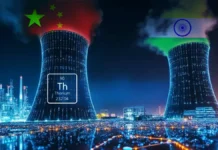
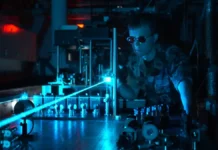










Spot on with this write-up, I actually believe that this amazing site needs a lot more attention. I’ll probably be returning to read more, thanks for the info!
Hello! Someone in my Facebook group shared this site with us so I came to give it a look. I’m definitely enjoying the information. I’m book-marking and will be tweeting this to my followers! Wonderful blog and brilliant design and style.
Thanks for a marvelous posting! I actually enjoyed reading it, you might be a great author. I will always bookmark your blog and will eventually come back later on. I want to encourage you to ultimately continue your great work, have a nice weekend!
Hey there! This is my first visit to your blog! We are a collection of volunteers and starting a new initiative in a community in the same niche. Your blog provided us beneficial information to work on. You have done a marvellous job!
Great